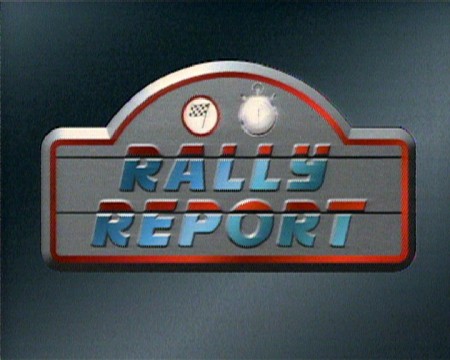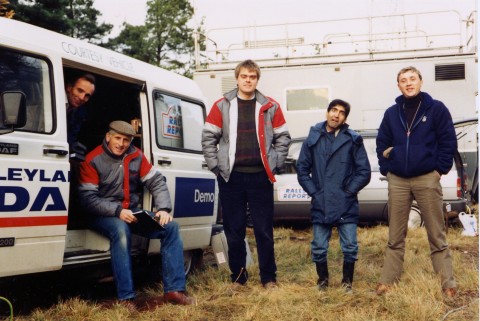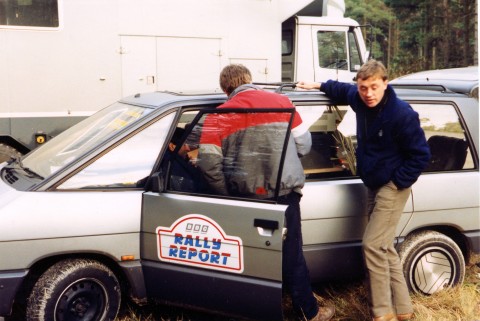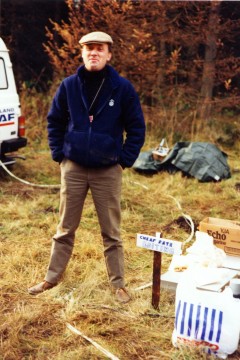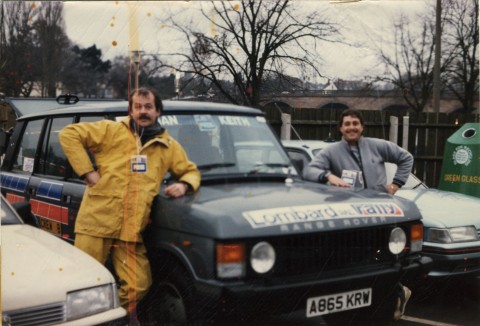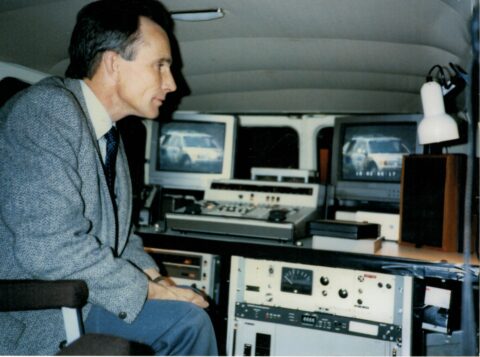
Photo from Mel Stevens, no reproduction without permission
This photo is of Film Unit’s Chris Rowlands, when he was Editing Organiser. It dates from the mid to late 1980s and is from the RAC Rally. Chris would order in editing equipment to fit out a van to edit on location.
The following comments were left on the Pebble Mill Facebook page:
Ian Collins: I was the editor on CM2 working on the Rally in 1988. John Burkill was Producer along with the late John Smith if I remember rightly and Tony Rayner was the Director. I think LO22 was also involved but I can’t rennet where we were located.
Ned Abell: Remember CM2 parked nearly outside the Nottingham Albany rally headquarters..and the Laguna Tandoori 3 steps away after transmission with starters on the table!!
Malcolm Hickman: I did plan the radio links for the RAC rally which was starting in Scarborough. That would have been the late 80s.
